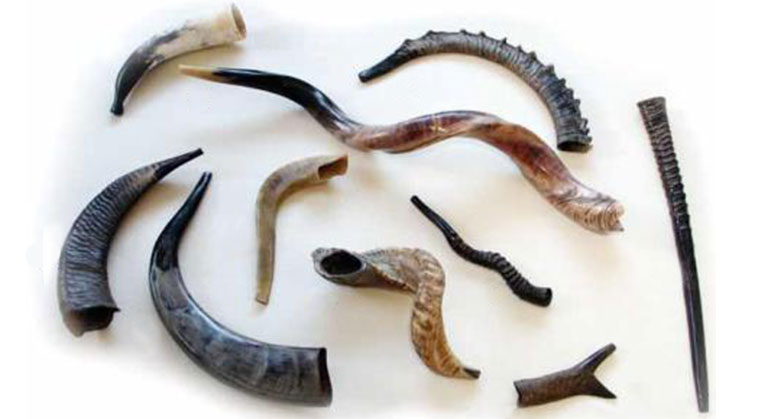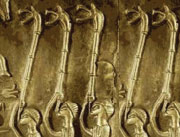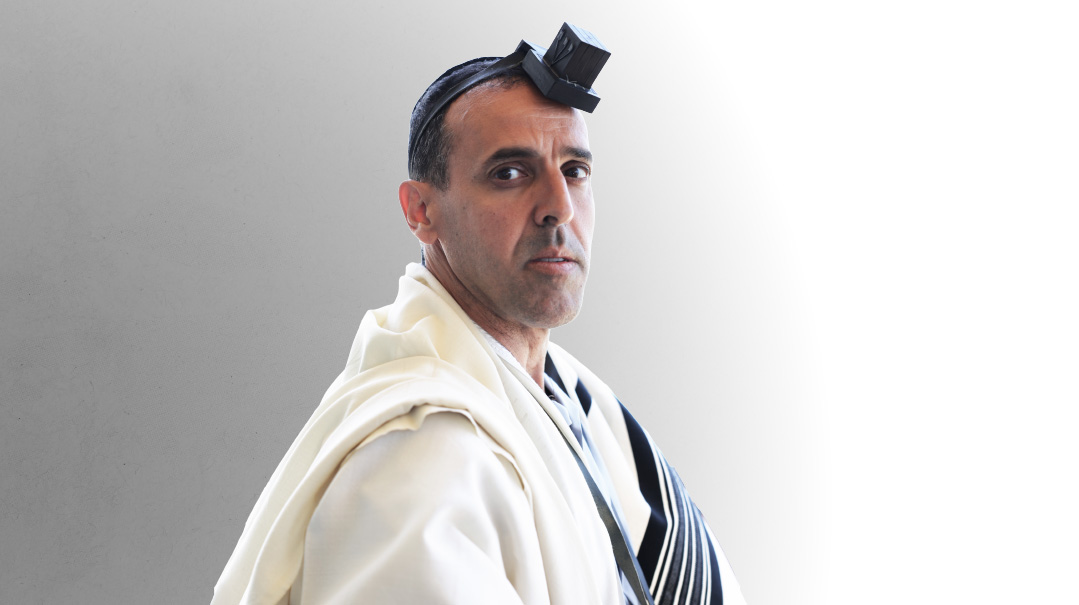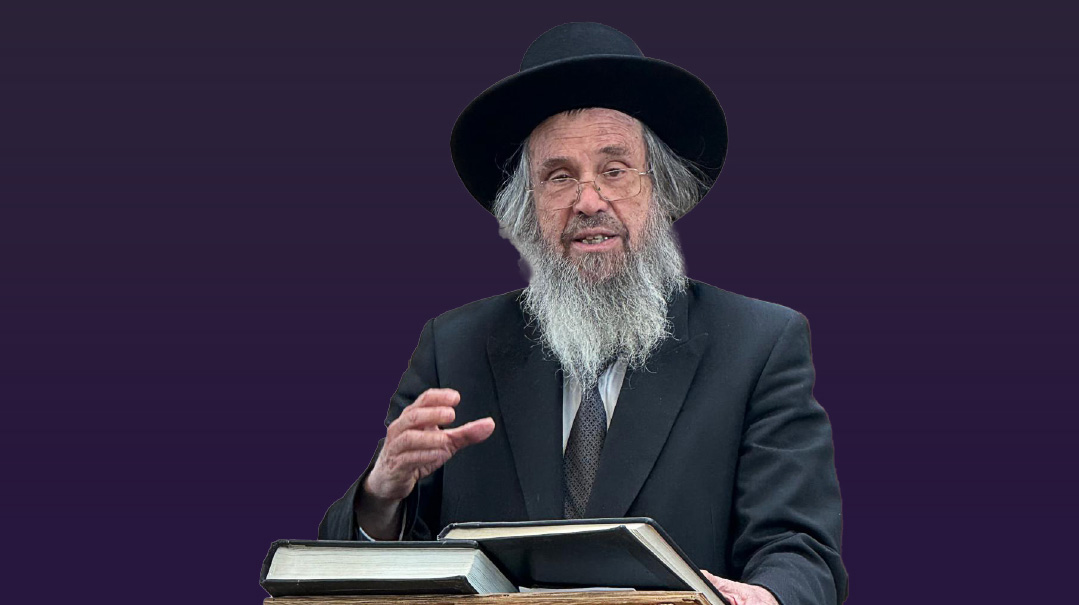Blast from the Past


SOUND THE HORN After the destruction of the Beis Hamikdash shofars and trumpets were rarely used in Jewish public life — except of course during the month of Elul and on Rosh Hashanah and Yom Kippur. But horn blasts continued to be used in other cultures
"If the shofar is sounded in the city will the people not tremble?” The navi Amos might have asked that question almost 3000 years ago but it’s as true today as it was then. There’s something about the shofar’s blasts that penetrate to the very core of our being.
But while the shofar remains the ultimate “wake-up call” of the Jewish people other peoples have also used horns of different shapes and sizes to wake up the populace whether it was to summon troops to battle or announce the entrance of royalty. And in more recent times horns are being used to do something ancient musicians and tony classical composers once thought impossible: Make music.
Sound the Shofar
Take a walk throughJerusalem’s Jewish Quarter during the weeks leading up to Rosh Hashanah and chances are you’ll hear someone making a few tentative blasts on one of the shofars on sale at the many tourist shops that line the streets. Those blasts might be applauded with a hearty yasher koach or greeted with giggles but one thing is certain: They won’t send people running for cover.
Yet in days of yore the sounding of the shofar could be as terrifying as the sirens used today to warn people to run to the nearest bomb shelter. For instance when Gideon ordered 300 of his men to blow upon their shofars the noise sent the enemy Midianite troops flying (Shoftim 3:27). And one can only imagine the terror of the people of Jericho when Yehoshua used a cacophony of shofar blasts combined with shouts to bring down the walls of that city (Yehoshua 6: 1-20).
Of coursenot all shofar blasts were associated with war. Shofars and trumpets (chatzotzros)
are mentioned dozens of times in Tanach with the most famous being the shofar blasts heard at Har Sinai during the giving of the Torah. The sounds of a heavenly shofar will also be heard on the future Day of Judgment (Tzefania 1:16) when the exiles are returned to Eretz Yisrael (Yeshayahu 27:13) and when the dead are resurrected (Yeshayahu 18:3). On Rosh Hashanah we are reminded of both Har Sinai and the End of Days by our own shofar blasts and promised that Hashem will remember us because of the sound of our shofar.
The shofar was also sounded at joyous times such as when David Hamelech brought the Holy Ark toJerusalem(Shmuel I 6:15) and when Shlomo Hamelech was crowned king (Melachim I 1:39). Silver trumpets were sounded when Shlomo Hamelech inaugurated the Beis Hamikdash (Divrei Hayamim II 5:13) and on Rosh Chodesh and holidays while the burnt and peace offerings were being offered (Bamidbar 10:10). When Shaul won a battle over the Plishtim a shofar was blown throughout the land to announce the victory (Shmuel I 13:3).
After the destruction of the Beis Hamikdash shofars and trumpets were rarely used in Jewish public life — except of course during the month of Elul and on Rosh Hashanah and Yom Kippur. But horn blasts continued to be heard in other places sometimes causing trembling and sometimes great joy and always making a loud far-reaching noise.
Natural Talent
The earliest trumpets were either made from the horn of an animal like our shofar or from a conch shell. When an animal’s horn was used the tip from the narrow end of the horn was removed to create a mouth hole. Often there wasn’t any mouthpiece and so the person would put his lips directly on the mouth hole. A trumpet made from a conch shell might have the tip of the shell removed or have a hole bored into the middle of the shell.
Early trumpets were also made from natural materials such as clay or hollowed out bark bamboo or gourd. These were often just long tubes without the flaring bell on the end and were used to amplify the human voice rather than make a horn-like sound.
During the Bronze Age trumpets made out of metal began to appear. Two of the treasures found in the tomb of the Egyptian ruler Tutankhamen were a trumpet made from silver and one made from copper with gold overlay. Dating back to the 1300s BCE they’re among the oldest surviving metal trumpets that have been found.
While trumpets were probably always used to assemble people or warn them of danger wall reliefs from the time of Assyrian King Sennacherib (705-681 BCE) show us another use: signaling to laborers working on massive building projects. In addition to telling the workers who were often slave laborers when to start and finish their work day the trumpet blasts would help them synchronize their movements while moving heavy slabs of stone or doing other heavy labor.
Teutonic tribes in northern Europe circa the sixth century BCE had their own trumpet which was called a lur. The lur had a slightly curved tube of metal with a small mouthpiece on one end and a flat metal disk resembling a shower head on the other. From drawings found in a burial mound it seems the lur was usually played in pairs. Lurs were also made from wood and some of these wooden ones were used to call to the cattle instead of people.
Battle Cry
By the time of the Romans trumpet players were an integral part of the army. The Romans had perfected the art of bending brass tubes which enabled them to create horns with different sounds. A cylindrical trumpet for example usually had a more brilliant piercing sound while a conical-shaped horn gave out a more mellow tone. There were four main kinds of Roman trumpets — the tuba the cornu the buccina and the lituus — and each was used for a different purpose. For instance the tuba (not to be confused with the modern brass instrument with the same name) was used to signal both a charge and a retreat — and the soldier had to know in an instant which signal was being relayed.
The sounds made by Roman trumpets have been variously described as horribilis (horrible) raucus (raucous) and stridulus (shrieking) and because the sound was so terribilis (terrible) they were never used to make music. Therefore after the fall of the Roman Empire in 476 and the disappearance of Roman soldiers from European soil trumpets fell out of use inEurope and people slowly forgot how to make them. It was only after the Crusaders encountered Arab Saracens — and their long metal trumpets — some 600 years later that the trumpet made a comeback inEurope.
The Romans weren’t the only ones who used trumpets on the battlefield during the time of the Roman Empire. The Celts had an interesting trumpet called a carnyx which was very long and stood straight up ending in a shape that resembled a boar’s head with an open mouth. Because it towered over the soldiers’ heads its tones could travel far — and the sight of the advancing boar heads must have been a frightening sight for the enemy.
Of course the Romans would never admit to being scared by this “peculiar barbarian kind” of trumpet which is how the carnyx was described by the historian Diodorus Siculus whose epic work Bibliotheca historica included a description of Julius Caesar’s capture of Gaul where the Roman emperor fought the Celts. Instead the Romans featured the carnyx on their coins and in triumphant sculptures where it became a symbol of the vanquished Celts — similar to the way the two chatzotzros appear on the relief of the Arch of Titus among other treasures the Romans stole after they destroyed the Beis Hamikdash andJerusalem.
The Hunt Is On
During the Middle Ages a favorite pastime of European kings and noblemen was to hunt animals for sport. An important member of the hunt was the person who blew the horn which signaled to the hunters where to find the animal being hunted. While some hunting horns were made from an ox’s horn the more upscale horn called an olifant was made from ivory. Later horns were made from brass or copper.

WARNING SIGNAL In days of yore the sounding of the shofar could be as terrifying as the sirens used today to warn people to run to the nearest bomb shelter
Horn players called Waits were also important members of medieval society. The Waits were a castle’s watchmen standing guard at night and ready to sound the alarm should a fire break out or enemy soldiers be spotted. The Waits would also herald the entrance of an important visitor. While watchmen with horns performed the same function in towns as well as woke up people in the morning over the years the term “Wait” began to be used for minstrels who played horns and reed instruments at important civic occasions.
Meanwhile Europeans were rediscovering how to coil metal tubes with a vengeance with the result that many new types of horns were being introduced such as the sackbut a sliding instrument similar to the trombone; a new-and-improved hunting horn that was coiled; and a strange instrument called the serpent which had a slithery shape.
Battle Cry: Refrain
Back on the battlefield the straight trumpet with the funnel-shaped bowl at the end was getting competition from two additions to the signaling corps: The fife a high-pitched flute and the drum. To avoid confusion as to who was signaling who by the 1500s the British army was using the trumpet only to signal the cavalry while the foot soldiers got their marching orders from the fife and drum.
By the early 1700s the din and smoke from weapons like the musket and cannon were making it practically impossible to hear any shouted command which made the trumpet and drum even more important on the battlefield. Armies began to standardize their trumpet calls giving the signals names like Marche Allarum Approache Assaulte Retreate and Skirmish. Each nation also adopted its own signature march a precursor to a country’s national anthem.
Oops! We could not locate your form.







